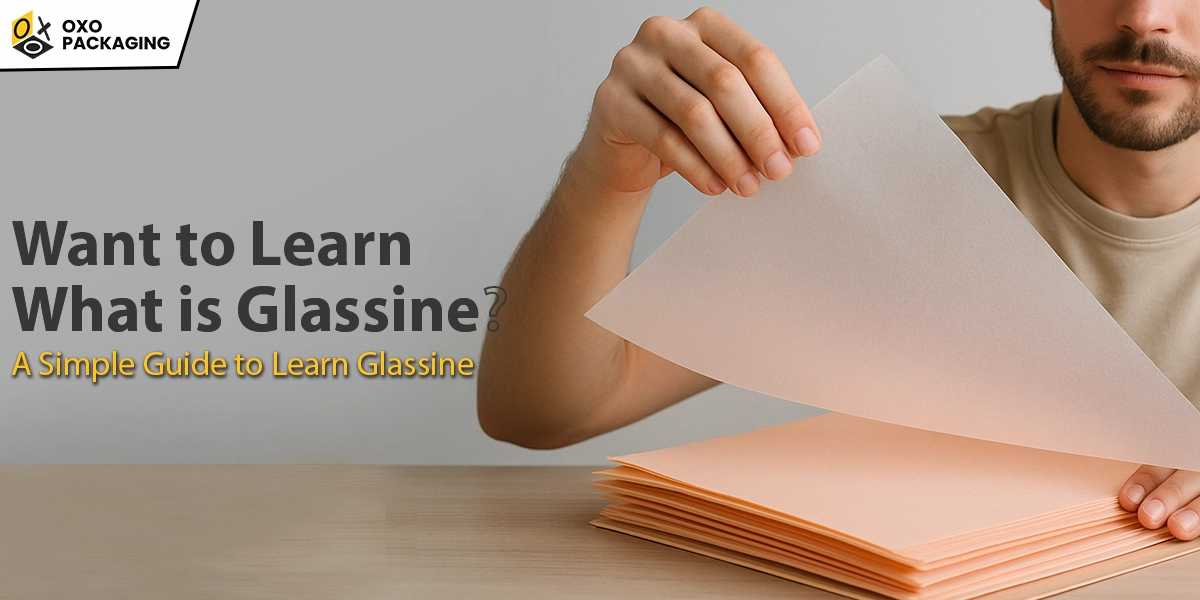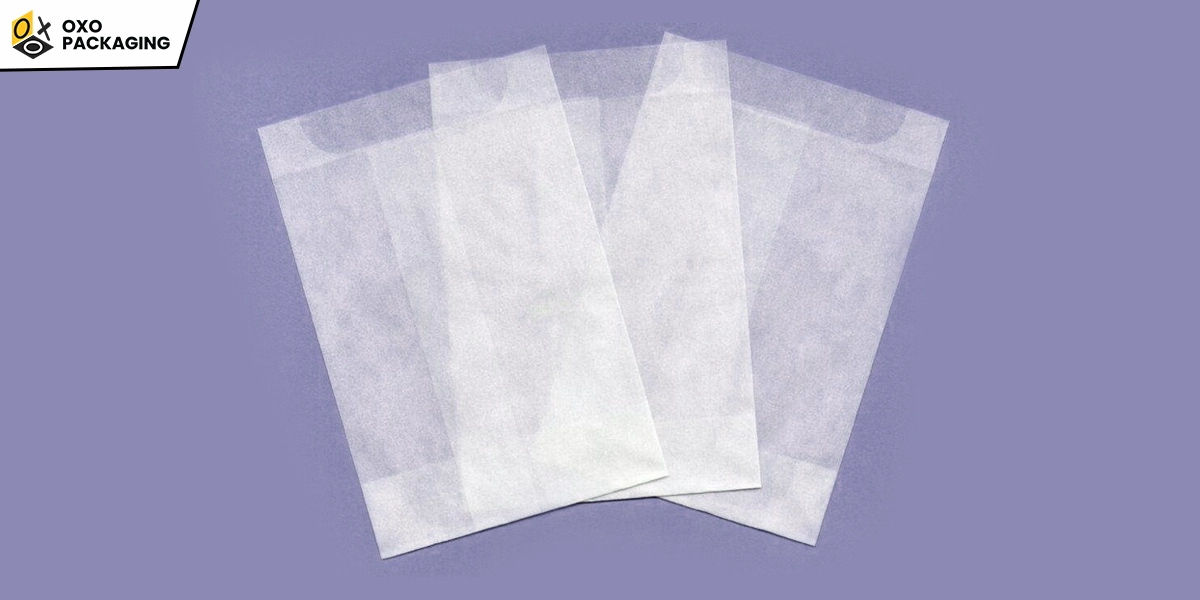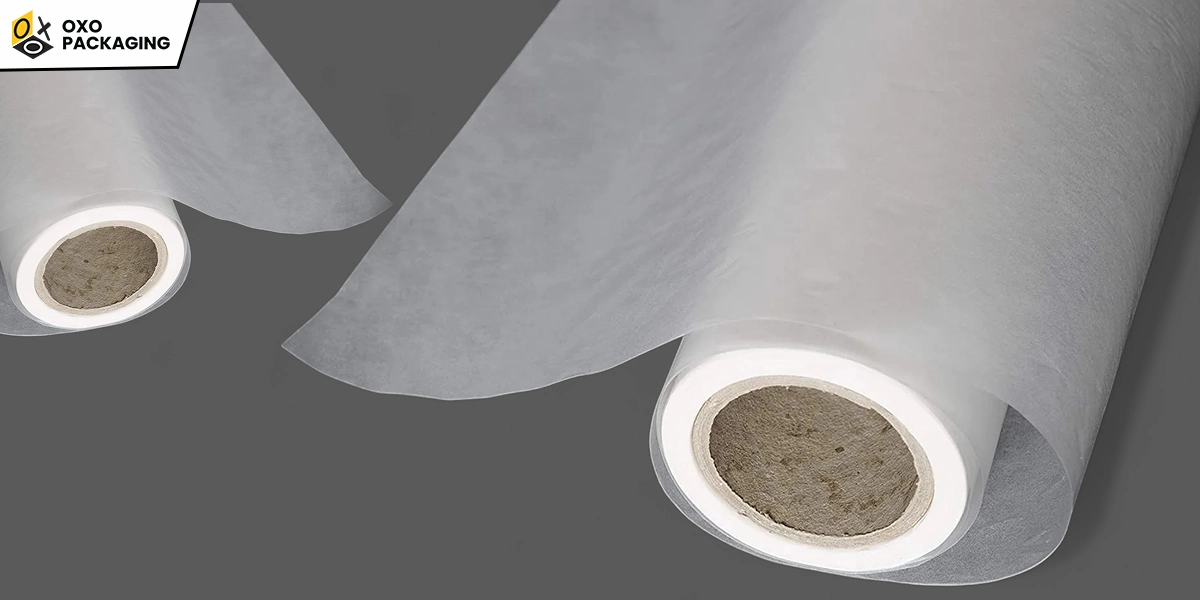Want to Learn What is Glassine? A Simple Guide to Learn Glassine

Glassine paper is one of the fine-quality wrapping papers used for different purposes. This paper is generally produced with a transparent or semitransparent outlook. It is perfect to package, wrap, and protect different products due to its high-barrier protective features. The main features include a smooth and glossy surface, grease and moisture resistance, and packaging of different delicate items to protect them from dust and dirt.
Read this blog to get the perfect understanding of glassine paper and use it to meet your personalized requirements.
What is Glassine?

Glassine or glassine paper is the word used to denote a thin, transparent, or semitransparent, or dense paper. This paper provides perfect resistance against the air, moisture, grease, and tearing. This is why this paper is excellent in providing smooth and thin eco-friendly wrapping paper choices with a high shelf life from three to five years.
How is Glassine Made?
Glassine is produced by applying a detailed process to the wood pulp to make it suitable for getting the high benefits of this paper. The wood pulp is extracted from the hardwoods. And the process is initiated by getting high-quality wood pulp and creating sheets. Then these sheets are heated to separate the cellulose fibers, and then a specific process is used, generally termed as supercalendering.
This is a natural sourced product and is made of 100% natural source, wood pulp. It makes this paper a highly recyclable and biodegradable choice for a more eco-friendly response. For the high resistance to air and grease, this makes glassine paper an excellent alternative to plastics, a great eco-friendly material choice to play its role in the green revolution.
What are the Uses of Glassine?

Due to the excellent barrier properties, such as high resistance against air, moisture, and dust protection, you can protect your valuable items. You might choose this wrapping paper for the ideal protection of your high-value, delicate items, food products, and other lightweight gift items boxes. Choose glassine paper for the wrapping of apparel, photos, and other valuable products.
Glassine paper, unlike other papers, is produced to provide maximum benefits, like protection, presentation, and packaging of your different kinds of products. This paper is a great choice for many valuable products, packaging of garments of your brand, creating snack and bakery bags, and protecting apparel products.
How is Glassine Different from Standard Paper?
Glassine paper is different from standard paper in many aspects. This paper is entirely different in the manufacturing, functionality, and performance they are produced for. You might also look into the details, like glassine paper, which is of higher density, superior resistance to moisture, grease, and tearing.
Glassine paper possesses twice the strength as compared to standard paper and offers more protection against tearing and puncture. Whereas standard paper is not made with such high strength, and provides less protection, and proves to be less practical for a variety of food packaging.
The Eco-Friendly Benefits of Glassine

The source material, manufacturing process, and structure of the glassine paper make it a more in-demand choice for a specific purpose. And the sustainability features of glassine paper have made this choice more attractive for eco-conscious prospects.
Glassine paper can prevent an increase in environmental pollution due to its biodegradability, compostability, and recyclability features. Though glassine paper is more expensive than most other types of paper, it can help you play a prominent role in reducing carbon emissions to save the environment from drastic impacts.
Precautions Using Glassine Paper
You should not use glassine paper in the oven or in high heat. This is due to the construction and the manufacturing of glassine paper. It is not made to be used in high heat or oven facilities; it might create a mess, ignite, or the wax can also melt.
Still, notice that glassine paper is less durable than parchment paper. This is why it is advised not to use it for freezing purposes as well. Use this paper only for non-heated applications, like wrapping sandwiches, rolling dough, butter packaging, and more, to get the maximum benefits of glassine paper.
Conclusion
Glassine paper is one of the highly in-demand paper choices for a specific usage. This is an expensive paper item and is more commonly used to benefit specific purposes. Some of the benefits of getting out of this paper are: superior strength and great protection from moisture and air.
This paper is also a perfect choice to improve the packaging of different types of food items to keep it safe from external harmful factors, like dust and dirt. You might also choose this paper to increase your products' perceived value, or to save fragile food products from spoilage.
No, glassine is something different from wax paper. Some of the major differences between these types of paper are: glassine, made with wood pulp, is a dense and smooth paper. It is made of grease and air-resistant with a specialized process called supercalendering. While vax paper is made grease-resistant with the addition of an externally coated layer of vax.
The shelf life of glassine paper is generally considered limited to three to five years. You should not use this paper for long-term storage over three to five years. And it is recommended to use the wrapped product early when opening the goods. It is produced from virgin sources and is a costly item for wrapping goods and storing products.
The major types of paper that cannot be recycled are those with a complex structure of two or more materials, processes, or lamination. The non-recyclable items include coated and treated papers, paper with food waste, and paper or magazine laminated with plastics. Some of the widely observed examples include juice and cereal boxes, paper cups, and paper towels.




